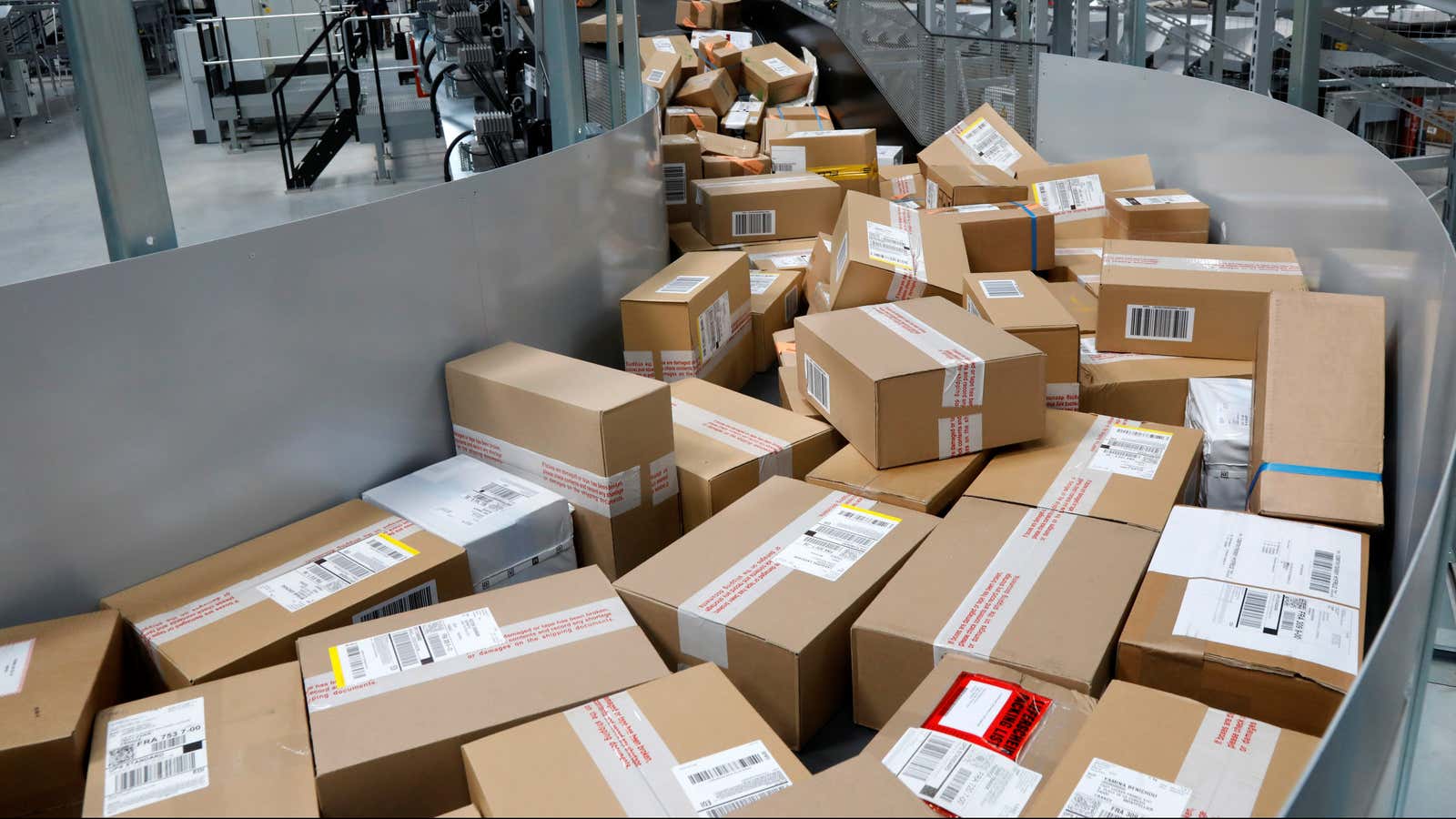The unstoppable ascent of e-commerce is spurring a corresponding decline in retailers’ profit margins, according to an analysis of six key European markets and more than 250 retailers. The trend is only set to continue with the pandemic speeding online shopping’s growth, making profits for the competitive retail industry that much harder to come by.
Over roughly the past decade, retailers’ pre-tax profit margins across the UK, Spain, Switzerland, France, Italy, and Germany have dwindled from 6.4% to 4.5%, said the study by Alvarez & Marsal, a management consultancy, in partnership with Retail Economics, a research firm focused on the UK’s retail and consumer industries. It pointed to online shopping as a major contributor. Its analysis found an inverse correlation between the increase in share of sales happening online and margins: as e-commerce penetration rises, margins fall.
It said it expects the trend to keep gathering momentum in the wake of the pandemic, as some of the online shopping habits consumers embraced become permanent. By 2025, it forecasted pre-tax margins for retailers in the six countries it analyzed will sink to just 3.2%. Without the pandemic prodding shoppers toward e-commerce, margins would have dropped only to 3.7%, it estimated. The gap translates to profits across those markets being €11 billion ($13 billion) less by that point than they would have been otherwise.
Why profit margins are so thin online
Certain segments of retail, such as groceries, were already operating on thin margins long before e-commerce came along. But selling goods online can also bring its own challenges.
For one thing, the visibility of e-commerce makes it easy for consumers to compare prices across retailers, creating intense competition to offer the best deals possible. In the US, prices across Amazon and other online retailers ticked downward for so long it prompted one economist to pose e-commerce as a reason for low inflation in the country.
The costs of fulfilling orders and handling returns—what retailers call reverse logistics—can also be high. Shoppers have come to expect fast, inexpensive shipping, placing the financial burdens of delivery largely on the shoulders of retailers. Target has said it’s about 90% cheaper on average when a customer picks up an online order in one of its stores versus Target shipping the item to their home.
Returns compound the costs, and they occur more frequently with online purchases. Return rates vary by category, but in the case of clothing, shoppers may even buy multiple items with the intent of returning most. Every return carries expenses such as shipping, customer care, inspecting and sorting goods, sometimes repackaging and repairing them, storage, and sometimes liquidation. As e-commerce grows, the volume of returns keeps rising.
The study found that purely online retailers tend to run on much slimmer margins than the industry average: 1.4%, versus 5.4% for the total industry. They generally have a different cost structure, and may also make up in growing sales volume and market share what they lack in profits.
Some categories, such as jewelry and furniture, are more insulated from the pandemic-accelerated shift online, according to the study. But retailers of items such as clothing, home goods, and electronics whose businesses are weighted toward store networks will likely need to make invest in building out their digital operations and improving their efficiency, putting even more pressure on their profitability in the near term.
